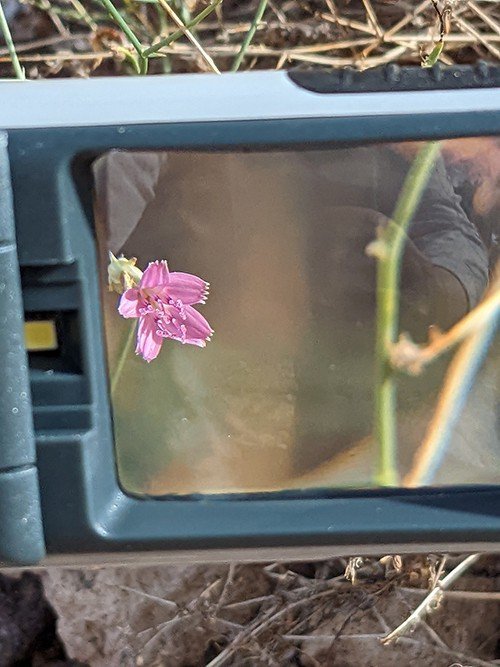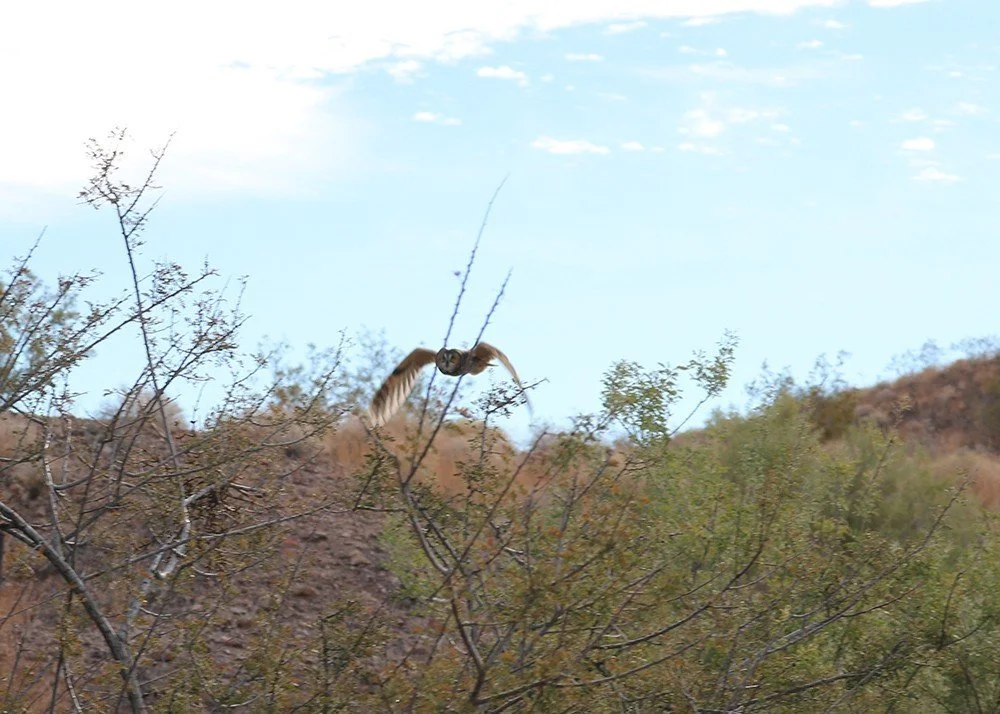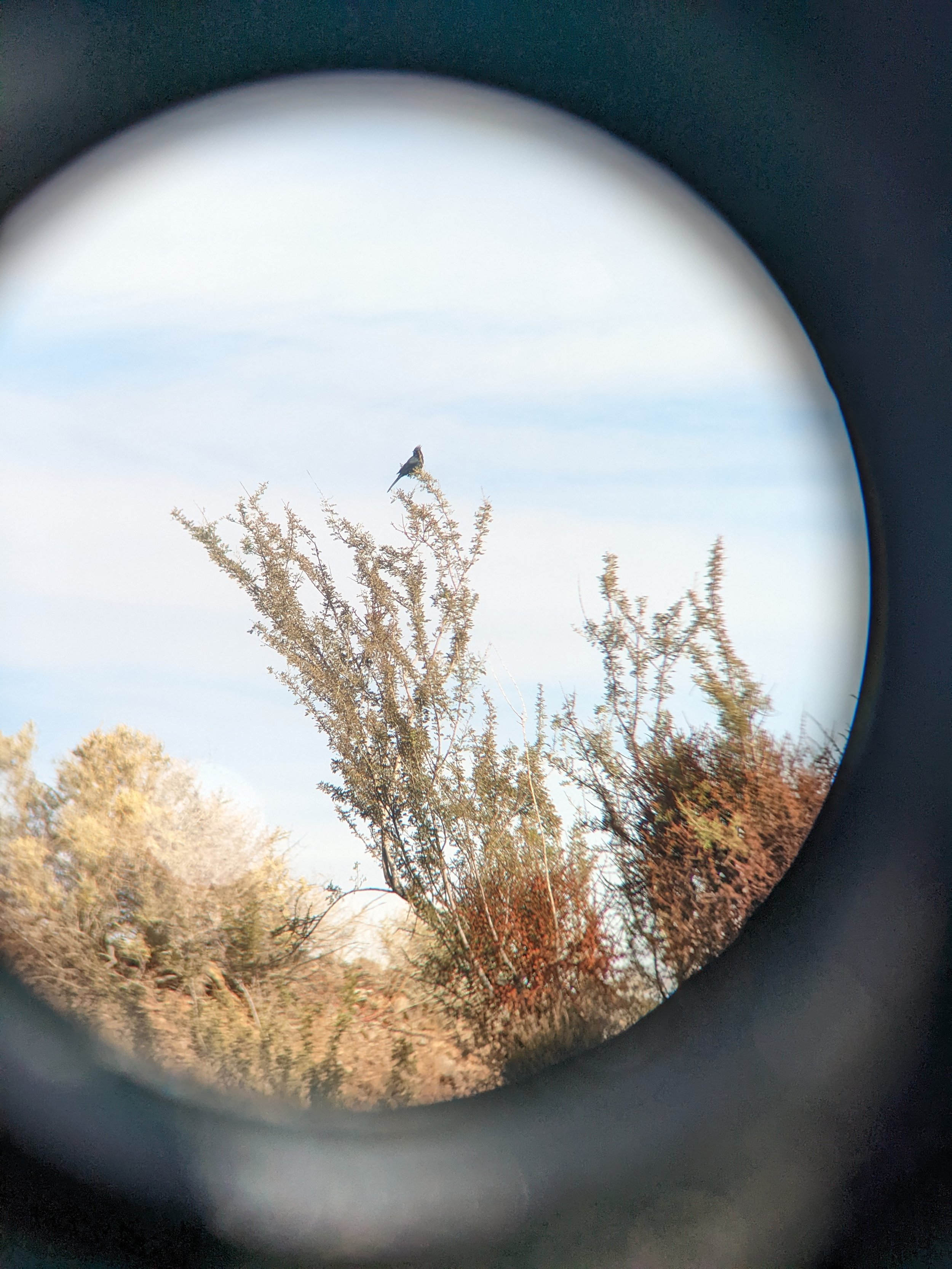Observing life at one of the Mojave Desert’s vital springs
Women In Science Discovering Our Mojave (WISDOM) interns Evette Palacios, Sara Poulain, and Sandra Zepeda spent six months observing birds and bumblebees at Arrowweed Spring in California. It was an experience that would connect them to this special habitat.
Arrowweed Spring
By Evette Palacios, Sara Poulain and Sandra Zepeda, WISDOM interns
Once a month for the past six months, we would meet at 6am in the Mojave Desert town of Joshua Tree to do research for the WISDOM internship. We would gather our gear, hop into a 4WD truck, and head to Arrowweed Spring in Mojave Trails National Monument. After a long drive through desert and dull highways, we would turn off onto a back country road with rocks and holes galore. Eventually, we would spot the California fan palm on rocky hills that tells us we have finally arrived.
At first glance, this natural spring might seem like nothing but rocks and bushes but once you are out among the never-ending brown, you start to notice what’s in the blur. Against the browns, colors stand out. The green of the creosote pops, the yellow flowers of the brittlebush are much brighter, the vibrant pink of the sandmat stretches out across the sand.
You feel drawn in, but those colors don’t only call to you. They call to all the wildlife as well. Insects of all shapes and sizes surround you. A tarantula hawk with bright orange wings drifts by. A large green caterpillar, soon to be a white-lined sphinx moth, gorges itself on a bush. The air is still, you can hear everything with increased senses. The birds sing you melodies, hidden among the trees. Quail run across your path and a phainopepla perches on a mesquite, watching you.
Walk carefully, because all around you are sharp needle like barbs of cactuses — an adaptation the plant has had to make to live in a harsh environment. Life out here isn’t easy. The desert can be dangerous, but when you observe it closer, it has a soft fragility. Within the fragility of the desert, we observed the birds and the bees and collect data using our binoculars, cameras, and nets.
Standing there, surrounded by everything you have just noticed, you have a new appreciation, a deeper love and connection to what you had once thought of as a barren land.
Through this experience, each of us has gained a new appreciation for the different bird species and the habitat they call home. Each one of them is unique like a fingerprint. The experience has also made us more aware of the factors that may be causing a decline in bumblebee sightings. As some of the first researchers to explore and collect data at Arrowweed Spring, it is easy to say this unique place now holds a special place in each of our hearts.
Long-eared owl (Asio otus) photo by Evette Palacios. Two owls were spotted inside a salt cedar. Once we approached they circled around us, eventually flying off.
Research goal
The goal of this research was to gather information on bird species and bumblebees at Arrowweed Spring in Mojave Trails National Monument according to preset protocol, making field notes, taking photographs, and analyzing data. The project aims to aid in the understanding of resource management in important climate refugia areas in the Mojave Desert and provide women with the opportunity to conduct that research.
Arrowweed Spring is located in Piute Valley in the northeastern part of Mojave Trails National Monument, less than 30 minutes from Needles. This natural oasis is part of the Colorado River watershed. The spring is partially developed with a picnic table for visitors and a concrete watering hole for wild animals and insects.
Phainopepla
Findings
Collecting data for Arrowweed Spring over six months has been rewarding. Each day was filled with interesting observations, and even the unexpected. In our short six months of collecting data, we saw many insects. Among them were grasshoppers, honeybees, white lined sphinx moth caterpillars, and tarantula hawks.
Unfortunately, we did not find any evidence of our primary target, the crotch bumblebee. However, sometimes negative data such as these can be the most important — then you can ask questions such as why they are not here and what can we do to make the site more suitable for their needs. There could be many reasons for the missing presence in this area. Our location was close to the agricultural fields of Needles. The use of pesticides along with the presence of honeybees may be a deterring factor for the bumblebee populations. Another possibility was the lack of flowering plants in the area. This could be due to the season during which we did our research. It was starting to get cold, and data has shown they are more likely to be spotted in warmer weather. These factors could explain why we didn’t come across the crotch bumblebee in our time out in the field.
Thank you to Chris Otahal, Noelle Glines-Bovio, and Jaclyn Bernstein of the Bureau of Land Management for their support and hard work.
This project was made possible thanks to the Conservation Lands Foundation.
Data provides rare insights into Mojave summer birds, bees
New data collected by WISDOM interns offers rare insights into the summer bird populations at two oases in the Mojave Desert. The data they collected is the first of its kind at these two oases.
Women in Science Discovering Our Mojave (WISDOM) is an MDLT internship program in collaboration with the Bureau of Land Management (BLM) that seeks to help engage women from underserved communities studying Science, Technology, Engineering, and Math (STEM). Learn more .







